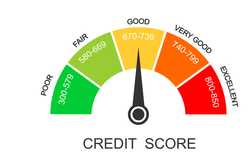10 Tips to Cut Your Tax Bill

Our evaluations and opinions are not influenced by our advertising relationships, but we may earn a commission from our partners’ links. This content is created by TIME Stamped, under TIME’s direction and produced in accordance with TIME’s editorial guidelines and overseen by TIME’s editorial staff. Learn more about it.
Tax season is a stressful time for most of us. You may be worried about overpaying on your taxes. Thankfully, there are several actions you can take to maximize your tax benefits and reduce your tax bill for the year. Here are ten tips to help you lower your tax bill without breaking any laws.
Free trial: 7 days
Essential: $19/month (best for assets under $29K)
Plus: $59/month (best for assets over $29K)
A tax credit directly reduces your tax bill, dollar for dollar. This means if you qualify for a $2,000 tax credit, you will reduce your tax bill by $2,000. There are several advantageous tax credits you may qualify for, including:
Tax deductions reduce your taxable income. You can either take the standard deduction based on your filing status or itemize your deductions. The standard deductions for 2023 are:
| Filing Status | Standard Deduction |
|---|---|
Single or Married Filing Separately | $13,850 |
Head of Household | $20,800 |
Married Filing Jointly / Surviving Spouse | $27,700 |
Most taxpayers take the standard deduction, but there may be instances where you should opt to itemize your deductions instead. Some useful deductions you can only take if you itemize include:
It is not just children who qualify as dependents. Other people can fall into this category as well.
If you take care of an ailing parent, house your child’s boyfriend or girlfriend, or have a freeloading roommate, you may be able to claim them as dependents. There are very specific rules for claiming dependents and dependent rules vary for each type of tax credit, so be sure to thoroughly research your specific situation before claiming somebody as a dependent.
Qualifying dependent children can earn you up to $2,000 with the child tax credit. Other dependents who are not qualifying children may still be considered a qualifying individual for the sake of the other dependent tax credit, which is worth up to $500 per dependent.
The Internal Revenue Service (IRS) has an online tool you can use to determine if your dependent qualifies you for either tax credit. Even if your dependent does not qualify for these tax credits, they can help you qualify for the earned income tax credit.
If you have access to a 401(k) through your employer, sign up. It is a great option to save for your retirement while your contributions and earnings grow tax-deferred over many years. You will pay taxes when you withdraw the funds.
Your 401(k) contributions are made pre-tax, so it keeps your taxable income lower in the current year. Some employers even match your 401(k) contributions to a certain percentage of your income. If your employer offers this option, be sure to maximize your contribution to achieve the full benefit of the extra money in your retirement account.
If your employer offers it, you can also get a designated Roth version of your 401(k) and make post-tax contributions. In this case, you get no tax deduction for your contribution in the year you make it. But not only does your money grow tax-free, your contributions and all your earnings can be withdrawn tax-free when you reach retirement age. And starting in 2024 you won’t have to take required minimum distribution withdrawals from your account.
RELATED: Best Roth IRA Accounts
Another great tax-deferred option is the traditional IRA. If you contribute to a traditional IRA, the money you deposit will not be taxed in the current year. Instead, your contributions and earnings grow tax-free until you make withdrawals.
Roth IRAs are not like traditional 401(k)s or traditional IRAs. With a Roth, you pay taxes in the current year. These accounts provide a future tax benefit. You can always take your contributions out tax-free and penalty-free. Additionally, as long as your account has been open for five years, you can withdraw earnings tax-free. The earnings can only be withdrawn penalty-free if you’ve reached the age of 59½. For more information on the difference between Roth and traditional IRAs, read this article.
A contribution to your high-deductible health coverage Health Savings Account (HSA) lowers your taxable income for the year. You also have until the tax deadline to contribute funds and apply them toward the previous tax year ending December 31, so it is a tax benefit you can take advantage of retroactively.
Contributions to a Flexible Spending Account (FSA) must be used on qualifying medical expenses in the same tax year or you lose out on the funds. However, you do not have to have a high-deductible health plan to contribute to an FSA. Similar to the HSA, your contributions lower your taxable income for the year.
Some employers offer a dependent care FSA, which can be used to pay for daycare, preschool, and elder care so that you can work. The IRS has very specific rules about each of these three types of accounts, so be sure you are using your account appropriately.
A qualified tuition program, also known as a 529 plan, can be used to pay for qualified higher education costs at an eligible educational institution. Additionally, you can use up to $10,000 per year on K-12 expenses at an elementary or secondary public, private, or religious school. Contributions are not tax-free. However, earnings grow tax-free and can be withdrawn tax-free when used for the qualified purposes.
If you opt to itemize your expenses on your tax return, you can claim charitable contributions as a tax deduction. These contributions do not even have to be cash contributions. Keep receipts if you donate goods or services and plan to claim the charitable contributions. Typically, the charitable contribution deduction is limited to 60% of your adjusted gross income (AGI).
Investment losses can offset your capital gains. With a net capital loss, you can even lower your taxable income by up to $3,000, or $1,500 if you are married and filing separately). If your net capital loss exceeds this amount, you can carry it forward to later tax years.
Be sure you are selling off your dud investment because you actually want to get rid of it. And remember: if you repurchase substantially similar stock or securities within 30 days, your loss is disallowed for tax purposes under wash sale rules.
If you are a small business owner or have a side gig where you report income or loss on Schedule C, Profit or Loss from Business, of Form 1040, U.S. Individual Income Tax Return, be sure you are maximizing your business expenses. There are beneficial business expense deductions available only to these taxpayers. Expenses that can be deducted include:
RELATED: Best Small Business Credit Cards
If you have a tax-deductible expense that you anticipate in the near future, try to bundle as many of them as possible into the current year. Most expenses must be paid prior to December 31 to be claimable on the current years’ tax return.
If you can pay your property taxes early or schedule an expensive surgery prior to December 31, you may be able to bundle enough expenses together to itemize your deductions and save on your tax bill.
These ten tips can help you minimize your tax bill. Consider them tools which design a financial plan to optimize your financial investments and maximize your tax benefits.
Once you’ve taken advantage of tax-saving tips, it's just as important that you use a reputable tax-filing software to file your taxes or hire a tax professional.
RELATED: Best Tax Preperation Softwares
Your tax liability is the total amount of tax you owe to the IRS. It is affected by your income, filing status, adjustments, deductions, and credits. You can find your tax liability on line 24 of Form 1040.
Small business owners can minimize their tax bill by taking advantage of many of the same tips that apply to individuals. There are special business deductions that you may qualify for including those for your home office, vehicle, and business loan interest.
Additionally, small business owners may be eligible to claim the qualified business income deduction, which enables you to deduct up to 20% of your qualified business income, as well as 20% of your qualified real estate investment trust (REIT) dividends and qualified publicly traded partnership (PTP) income. Talk to a tax professional about whether your business qualifies for any of these beneficial deductions.
Most deductions require a receipt. One major business expense deduction that does not require a receipt is the home office deduction, but only if you use the simplified option.
If you are being audited by the IRS, it will want receipts or other documentation that proves the expenses you have claimed as deductions are real. If you do not have receipts, canceled checks, bank or credit card statements, written records or other documentation may be sufficient.
If you earn $150,000 in California as a single taxpayer, you will take home approximately $99,000 after taxes. That equates to a total tax rate of approximately 34%, or just over one-third of your income.
A tax deduction reduces your taxable income, which in turn reduces the amount of taxes you owe. Unlike a tax credit, which lowers the amount of taxes you owe dollar for dollar, a tax deduction reduces your tax bill by your marginal income tax rate. For example, a $1,000 tax credit will reduce your tax bill by $1,000, whereas a $1,000 tax deduction for somebody in the
24% income tax bracket would only reduce their tax bill by $240.
TIME Stamped is paid a flat fee for each successful referral to Herring RIA Sub, LLC ("Playbook") made through our links. TIME Stamped is not a Playbook client. There is no guarantee that clients will have similar experiences or success.
The information presented here is created by TIME Stamped and overseen by TIME editorial staff. To learn more, see our About Us page.




